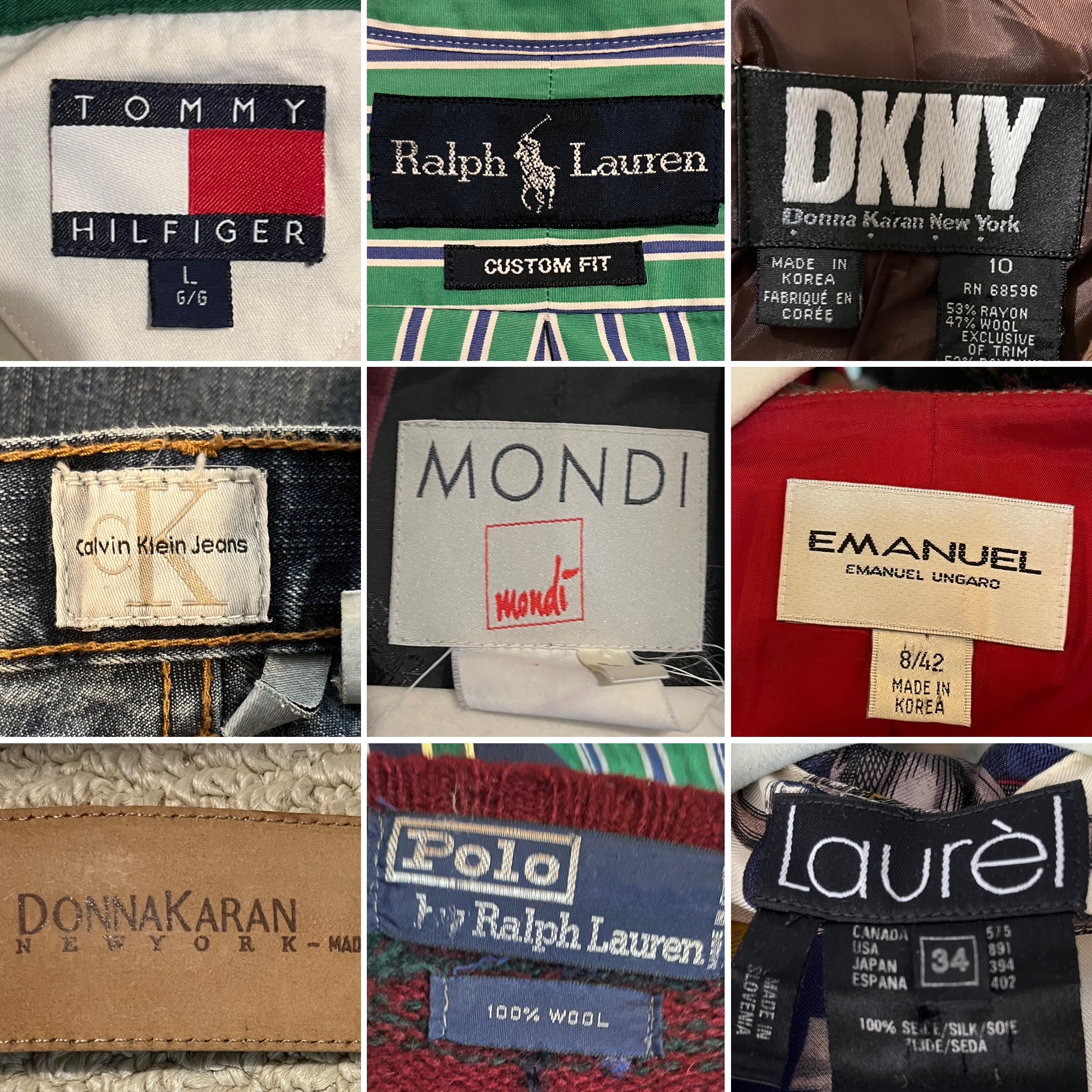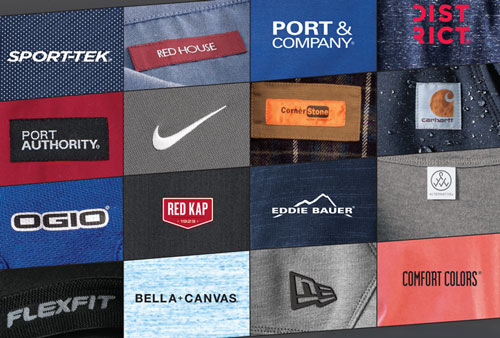How Branded Clothing Uses Fabric to Match Season and Occasion
How Branded Clothing Uses Fabric to Match Season and Occasion
Blog Article
Comprehending Apparel: The Value of Fabric Options in Your Wardrobe
The choice of textile in clothing plays a critical duty in both visual appeals and performance. Various materials supply varying degrees of breathability, convenience, and sturdiness, straight influencing the wearer's experience. Comprehending these subtleties can enhance one's wardrobe significantly. Several neglect just how these options can influence not simply individual design, but also sustainability. What fabric choices could redefine your closet and align it with both design and obligation?
The Function of Textile in vogue and Functionality

Usual Material Kinds and Their Qualities
When selecting garments, recognizing the characteristics of typical fabric types is necessary for making informed choices. Cotton, a widely-used natural fiber, is understood for its convenience, softness, and breathability, making it ideal for sportswear and everyday garments. Linen, an additional natural alternative, flaunts superb moisture-wicking homes and an unique texture, suitable for warm climates.Wool, usually preferred for its warmth and resilience, varies in excellence; merino wool is soft versus the skin, while coarser kinds are utilized for outerwear. Synthetic fabrics like polyester and nylon provide longevity and resistance to wrinkles, making them prominent for activewear and travel garments. Ultimately, blends, which incorporate artificial and all-natural fibers, can improve performance while maintaining comfort. By acknowledging these textile features, people can pick apparel that aligns with their way of life and aesthetic choices.
Breathability and Convenience: Choosing the Right Fabrics for Different Climates
Picking the best materials for different environments can substantially improve comfort and overall wearability. Breathable products are necessary in warm climates, as they permit air flow and moisture dissipation. Fabrics such as cotton, linen, and moisture-wicking synthetics successfully attract sweat far from the body, maintaining the user cool and dry. Alternatively, in chillier climates, thicker fabrics like woollen or fleece give insulation while keeping breathability, guaranteeing warmth without overheating.Additionally, the selection of textile weight plays a vital duty; lightweight textiles are more effective for summer season, whereas much heavier choices are matched for winter season wear. Understanding the unique residential or commercial properties of each fabric makes it possible for individuals to dress properly for varying climate condition. Eventually, selecting breathable and comfy fabrics customized to certain climates can considerably enhance daily convenience and boost the overall experience of wearing clothes.
Longevity and Care: How Material Impacts Long Life of Your Closet
Picking the appropriate materials can greatly affect the sturdiness and care demands of a wardrobe. Fabrics such as cotton and polyester are understood for their resilience and ease of maintenance, making them excellent for day-to-day wear. On the other hand, delicate products like silk and lace require even more cautious handling and specialized cleaning techniques, which can increase the time and initiative required for care. Branded Clothing.Durability is additionally influenced by the fabric's weave and coating; tightly woven materials often tend to withstand wear and tear far better than loosely woven alternatives. In addition, synthetic blends frequently give boosted sturdiness, combining the very best high qualities of multiple fibers.Understanding the care instructions for each textile is essential, as improper drying out or washing can lead to early wear. Eventually, picking durable products can result in a longer-lasting wardrobe, decreasing the frequency of substitutes and adding to a more lasting style choice
The Effect of Material on Fit and Silhouette

Lasting Textile Options: Making Eco-Friendly Decisions
The influence of material expands past fit and silhouette to include environmental factors, motivating an expanding passion in sustainable material selections. Environmentally friendly materials, such as organic cotton, hemp, and Tencel, are getting grip amongst consumers that focus on sustainability in their wardrobes. These products are commonly created with fewer chemicals and water, lowering their eco-friendly footprint.Additionally, recycled materials, made from post-consumer waste, offer an ingenious remedy to the fabric market's pollution trouble. Brands significantly welcome openness in their sourcing techniques, permitting consumers to make enlightened choices regarding their purchases.Choosing sustainable materials not just sustains moral methods yet also urges the apparel industry to take on more responsible production methods. As understanding of ecological issues rises, people are advised to review the long-lasting influence of their material choices, fostering a motion in the direction of an extra sustainable and environmentally mindful technique to style.
Boosting Style: Exactly How Fabric Can Change an Attire
While many might focus on shade and cut when choosing a clothing, the option of material plays a crucial duty in raising design and enhancing general look. Different products convey distinctive moods and messages; for instance, silk shows luxury and sophistication, while denim provides go right here a casual, unwinded vibe. The texture and drape of a textile can considerably alter the silhouette, with organized materials providing a sleek appearance and softer ones producing a much more fluid, unwinded aesthetic.Moreover, the weight of the fabric affects wearability throughout seasons. Light-weight materials like linen and cotton are suitable for summer, while larger materials such as wool and velour give heat and style in chillier months. Understanding fabric buildings, such as breathability and stretch, likewise empowers people to make informed selections that enhance convenience without jeopardizing style. Ultimately, the ideal material can transform an outfit from regular to remarkable, making it an important factor to consider in any type of closet.
Regularly Asked Concerns
Exactly how Do I Determine the Textile Content of My Clothing?
To identify textile web content, one can examine treatment labels, conduct burn examinations for fiber recognition, or seek advice from material examples. These methods help differentiate materials, guaranteeing informed options for apparel care and maintenance in daily wear.
Can Fabric Selection Affect My Mood or Confidence?
Material option can considerably impact an individual's state of mind and confidence. Branded Clothing. Particular materials might evoke feelings of comfort or sophistication, while others can really feel uncomplimentary or restrictive, inevitably affecting self-perception and psychological health throughout the day
What Fabrics Are Best for Delicate Skin?
For people with delicate skin, all-natural materials like bamboo, cotton, and bed linen are commonly suggested. These materials are breathable, hypoallergenic, and less likely to trigger irritability, making them suitable choices for comfort and skin wellness.
How Do I Correctly Clean and Look After Various Fabrics?
To correctly care and wash for different textiles, one must consider each product's certain needs, including temperature setups, cleaning agents, and drying out approaches, making sure durability and keeping the material's initial qualities for optimal usage.
Exist Certain Fabrics for Athletic or Efficiency Use?
Sports or performance wear often uses textiles such as spandex, polyester, and nylon. These products are designed for moisture-wicking, breathability, and adaptability, boosting motion and convenience throughout exercises while giving longevity and support. Conversely, in colder environments, thicker fabrics like wool or fleece give special info insulation while keeping breathability, guaranteeing heat without overheating.Additionally, the selection of fabric weight plays a vital function; lightweight textiles are more suitable for summer, whereas much heavier options are fit for winter season wear. In contrast, delicate materials like silk and lace call for more cautious handling and specialized cleaning methods, which can enhance the time and initiative required for care.Durability is likewise affected by the textile's weave and surface; snugly woven fabrics have a tendency to stand up to wear and tear better than freely woven alternatives. In comparison, stiff materials can restrict movement however provide a timeless, polished look.Moreover, the thickness you can look here and appearance of the textile can influence the visual understanding of body form. The effect of textile prolongs past fit and shape to incorporate ecological factors, motivating a growing rate of interest in lasting textile choices. The appearance and drape of a textile can drastically change the silhouette, with organized materials offering a refined appearance and softer ones developing an extra fluid, relaxed aesthetic.Moreover, the weight of the fabric influences wearability throughout seasons.
Report this page